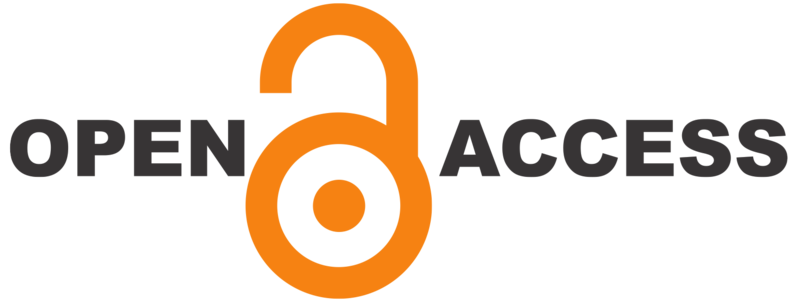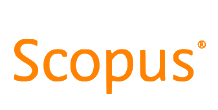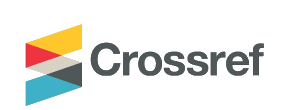Interdisciplinary project-based learning as a means of developing employability skills in undergraduate science degree programs
DOI:
https://doi.org/10.21153/jtlge2019vol10no2art827Keywords:
Project-based learning, capstone project, interdisciplinary learning, undergraduate science, employability skills, curriculum designAbstract
Project-based learning units are often used for large scale work integrated learning (WIL) experiences in Liberal Studies Degrees as they offer scalability and sustainability of delivery to large cohorts. This systematic search and review evaluates the effectiveness of interdisciplinary project-based learning in Science Degree programs for developing discipline knowledge and employability skills. Education literature databases were searched for peer-reviewed journal articles that discussed undergraduate science-based degree programs with project-based learning units involving students from multiple disciplines. Data were analysed for evidence of a skill gain in 6 areas (Discipline knowledge, Communication, Teamwork, Interdisciplinary effectiveness, Critical thinking and problem solving, and Self-management). Projects were assigned to categories based on interdisciplinary breadth and depth. Data was analysed by cross-tabulations, Fisher’s Exact test and by calculating odds ratios (OR), which indicate the effect size. Perception of a skill gain was significantly more likely to be reported than an objectively measured skill gain (p<0.001). Real discipline skill gains were 6.6 times more likely in projects narrow in discipline mix (OR 6.6), however perceived discipline skill gains were high irrespective of project type. Projects with wide interdisciplinarity were significantly associated with perceived gains in interdisciplinary effectiveness (OR 32, p<0.05) and more likely to have perceived gains in communication (OR 2.5) and teamwork (OR 3.4) skills. When projects have greater interdisciplinary breadth or depth, perceived student employability skill gains increase, perceived discipline skill gains are unaffected, however actual discipline skill gains are less reported. Further research and evidence that project-based learning is meeting the desired WIL learning objectives of the curriculum is needed.
Metrics
References
References
Abrami, P. C., Bernard, R. M., Borokhovski, E., Waddington, D. I., Wade, C. A., & Persson, T. (2015). Strategies for teaching students to think critically: A meta-analysis. Review of Educational Research, 85(2), 275–314. doi:10.3102/0034654314551063
Atif, A., Richards, D., Busch, P., & Bilgin, A. (2015). Assuring graduate competency: A technology acceptance model for course guide tools. Journal of Computing in Higher Education, 27(2), 94–113. doi:10.1007/s12528-015-9095-4
Australian Council of Deans in Science. (2016). WIL in Science: Leadership for WIL. Final report 2016. Retrieved from https://www.chiefscientist.gov.au/wp-content/uploads/WIL-in-Science-project-report-2016-final-publication-post-review.pdf
Bee, O. K., & Hie, T. S. (2015). Employers' emphasis on technical skills and soft skills in job advertisements. The English Teacher, 44(1), 1–XI.
Biggs, J., & Tang, C. (2007). Teaching for quality learning at university (3rd Edition ed.): Open University Press.
Blumenfeld, P. C., Soloway, E., Marx, R. W., Krajcik, J. S., Guzdial, M., & Palincsar, A. (1991). Motivating project-based learning - sustaining the doing, supporting the learning. Educational Psychologist, 26(3-4), 369–398. doi:DOI 10.1207/s15326985ep2603&4_8
Bridgestock, R. (2015). KEY-shaped people, not T-shaped people – disciplinary agility and 21st century work. Retrieved from http://www.futurecapable.com/?p=102
Chadha, D. (2006). A curriculum model for transferable skills development. Engineering Education, 1(1), 19–24. doi:10.11120/ened.2006.01010019
Coll, R., & Zegwaard, K. (2006). Perceptions of desirable graduate competencies for science and technology new graduates. Research in Science & Technological Education, 24(1), 29–58. doi:10.1080/02635140500485340
Crebert, G., Bates, M., Bell, B., Patrick, C., & Cragnolini, V. (2004). Developing generic skills at university, during work placement and in employment: graduates' perceptions. Higher Education Research & Development, 23(2), 147–165.
de Greef, L., Post, G., Vink, C., & Wenting, L. (2017). Designing interdisciplinary education: A practical handbook for university teachers: Amsterdam University Press.
Deloitte Access Economics. (2014). Australia’s STEM workforce: A survey of employers. Office of the Chief Scientist, Australia.
Diodati, M. (2017). Is being a ‘T-shaped’ person still enough? Retrieved from https://medium.com/re-write/is-being-a-t-shaped-person-still-enough-2d0b43073285
DiPiro, J. (2010). Student learning: Perception versus reality. American journal of pharmaceutical education, 74(4), 1–63.
English, M. C., & Kitsantas, A. (2013). Supporting student self-regulated learning in problem- and project-based learning. Interdisciplinary Journal of Problem-Based Learning, 7(2), 6.
Ennis, R. (1989). Critical thinking and subject specificity: Clarification and needed research. Educational Researcher, 18(3), 4–10. doi:10.3102/0013189X018003004
Foundation for Young Australians. (2016). The new basics: Big data reveals the skills young people need for the New Work Order. Retrieved from file:///C:/Users/Study/AppData/Local/Temp/The-New-Basics_Update_Web.pdf
Freeman, S., Eddy, S. L., McDonough, M., Smith, M. K., Okoroafor, N., Jordt, H., & Wenderoth, M. P. (2014). Active learning increases student performance in science, engineering, and mathematics. Proceedings of the National Academy of Sciences of the United States of America, 111(23), 8410–8415. doi:10.1073/pnas.1319030111
Gasper, B., & Gardner, S. (2013). Engaging students in authentic microbiology research in an introductory biology laboratory course is correlated with gains in student understanding of the nature of authentic research and critical thinking. Journal of Microbiology & Biology Education, 14(1). doi:10.1128/jmbe.v14i1.460
Gottesman, A., & Hoskins, S. (2013). CREATE Cornerstone: Introduction to scientific thinking, a new course for STEM-interested freshmen, demystifies scientific thinking through analysis of scientific literature. CBE-Life Sciences Education, 12(1), 59–72. doi:10.1187/cbe.12-11-0201
Grant, M., & Smith, M. (2018). Quantifying assessment of undergraduate critical thinking. Journal of College Teaching & Learning (TLC), 15(1), 27–38. doi:10.19030/tlc.v15i1.10199
Harris, K. (2012). A background in science: What science means for Australian society. Retrieved from https://eric.ed.gov/?id=ED537994
Hill, M., Overton, T., Thompson, C., Kitson, R., & Coppo, P. (2019). Undergraduate recognition of curriculum-related skill development and the skills employers are seeking. Chemistry Education Research and Practice. doi:10.1039/C8RP00105G
Innovation and Science Australia. (2017). 2030 Strategic Plan for the Australian Innovation, Science and Research System. Retrieved from https://consult.industry.gov.au/office-of-innovation-and-science-australia/2030-strategic-plan-for-the-australian-innovation/
Jantsch, E. (1970). Inter-disciplinary and transdisciplinary university - systems approach to education and innovation. Policy Sciences, 1(4), 403–428. doi:Doi 10.1007/Bf00145222
Johnston, D. L. (1978). Scientists become managers-the 'T'-shaped man. IEEE Engineering Management Review, 6(3), 67–68. doi:10.1109/EMR.1978.4306682
Jorre de St Jorre, T., & Oliver, B. (2018). Want students to engage? Contextualise graduate learning outcomes and assess for employability. Higher Education Research & Development, 37(1), 44–57. doi:10.1080/07294360.2017.1339183
Kuhn, K., & Rundle-Thiele, S. (2009). Curriculum alignment: Exploring student perception of learning achievement measures. International Journal of Teaching and Learning in Higher Education, 21(3), 351–361.
Leckey, J. F., & McGuigan, M. A. (1997). Right tracks-wrong rails: The development of generic skills in higher education. Research in Higher Education, 38(3), 365–378.
Lin-Stephens, S., Smith, S., Richards, D., Pang, V., Uesi, J., & Athanasou, J. (2017). Students and employers don’t see eye to eye: The case of information systems, information technology and engineering. PACIS 2017 Proceedings, 120.
McPeck, J. (1990). Critical thinking and subject specificity: A reply to Ennis. Educational Researcher, 19(4), 10–12. doi:10.3102/0013189X019004010
Moni, R., Hryciw, D., Poronnik, P., & Moni, K. (2007). Using explicit teaching to improve how bioscience students write to the lay public. Advances in Physiology Education, 31(2), 167–175. doi:10.1152/advan.00111.2006
Norton, A. (2016). Mapping Australian higher education 2016. Grattan Institute.
Oliver, B., & Jorre de St Jorre, T. (2018). Graduate attributes for 2020 and beyond: Recommendations for Australian higher education providers. Higher Education Research & Development, 37(4), 821–836. doi:10.1080/07294360.2018.1446415
Palmer, S., Campbell, M., Johnson, E., & West, J. (2017). Occupational outcomes for Bachelor of Science graduates in Australia and implications for undergraduate science curricula. Reseach in Science Education. doi:10.1007/s11165-016-9595-x
Qualities Indicators for Learning and Teaching (QILT). (2018). 2017 Graduate Outcome Survey. Canberra, Australia: Australian Government. Department of Education and Training.
Riebe, L., Roepen, D., Santarelli, B., & Marchioro, G. (2010). Teamwork: Effectively teaching an employability skill. Education + Training, 52(6/7), 528–539. doi:10.1108/00400911011068478
Sarkar, M., Overton, T., Thompson, C., & Rayner, G. (2016). Graduate employability: Views of recent science graduates and employers. International Journal of Innovation in Science and Mathematics Education, 24(3), 31–-48.
University of Sydney (2016). 2016-2020 Strategic Plan. Sydney: University of Sydney.
World Economic Forum (2018). The future of jobs report 2018. World Economic Forum.











